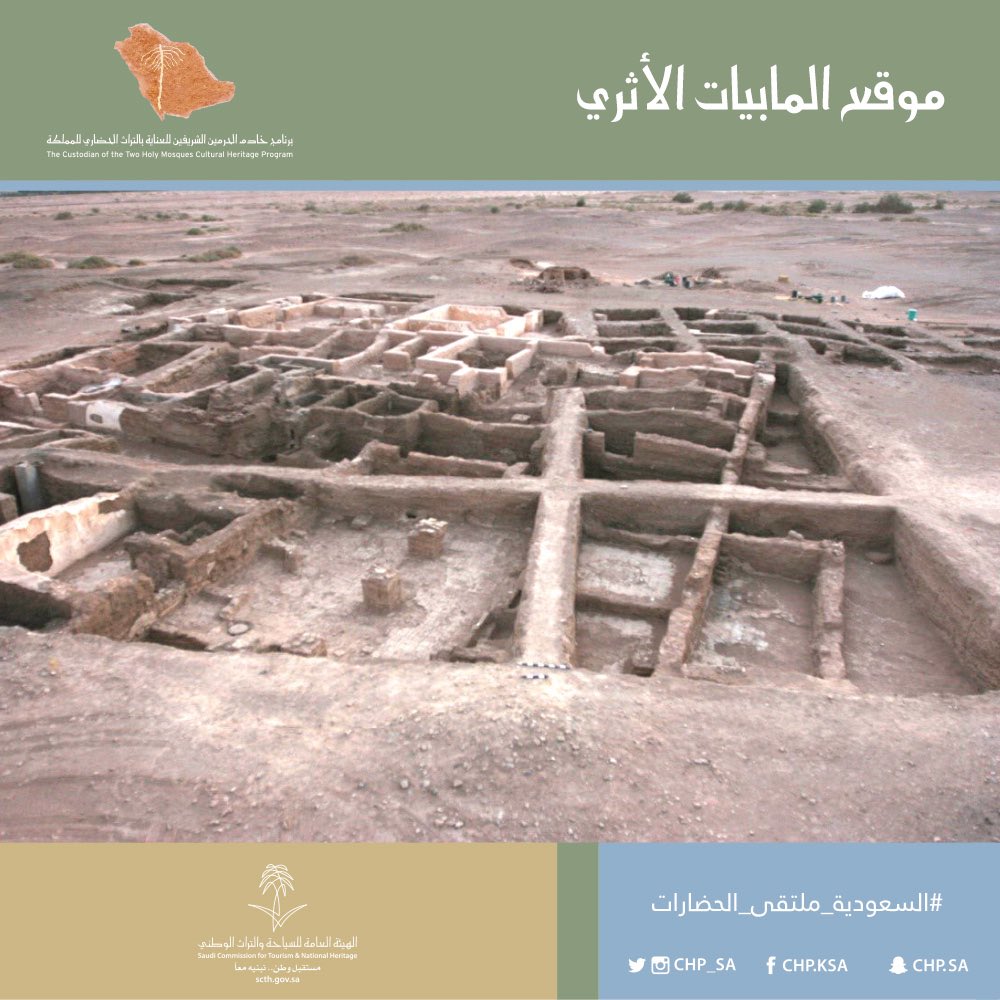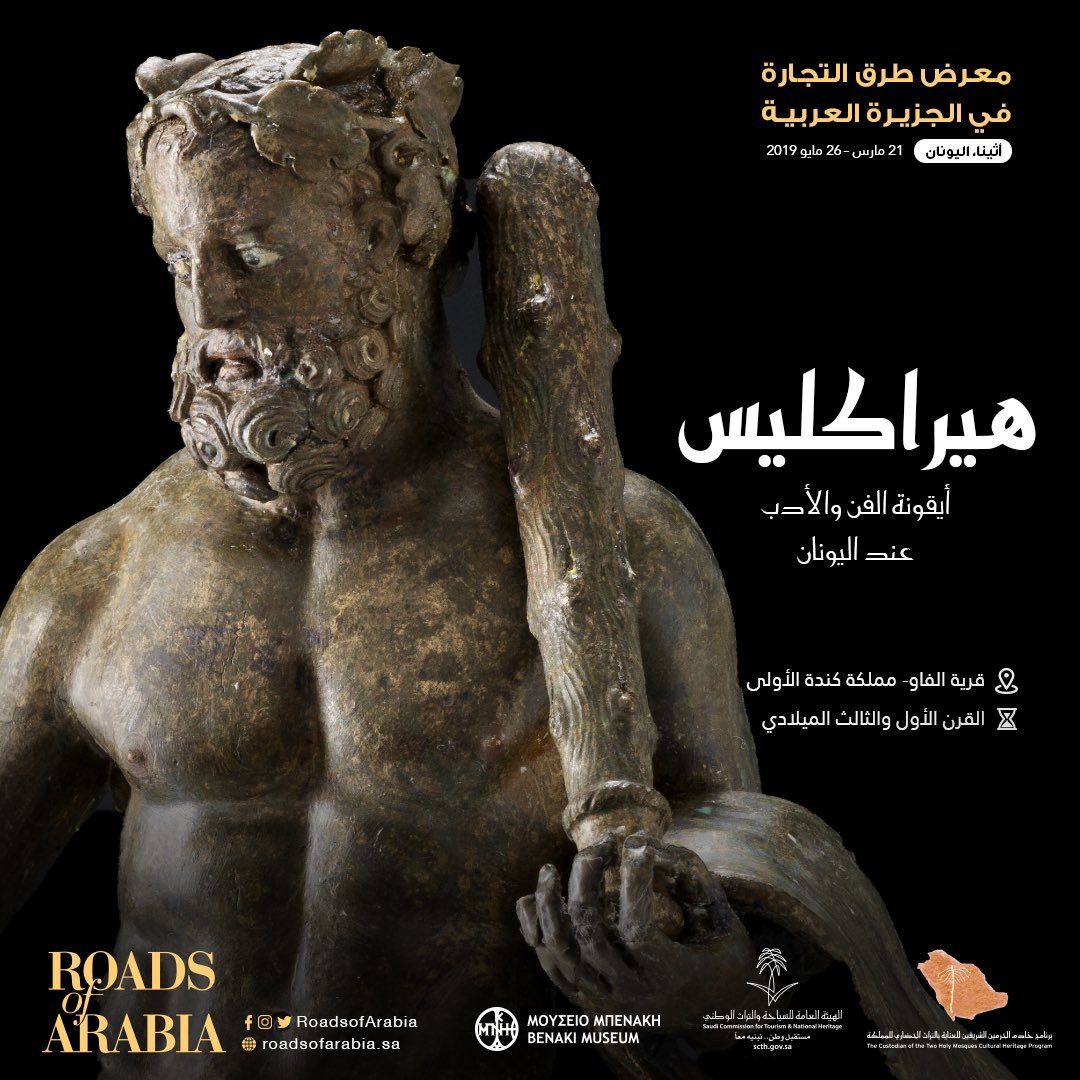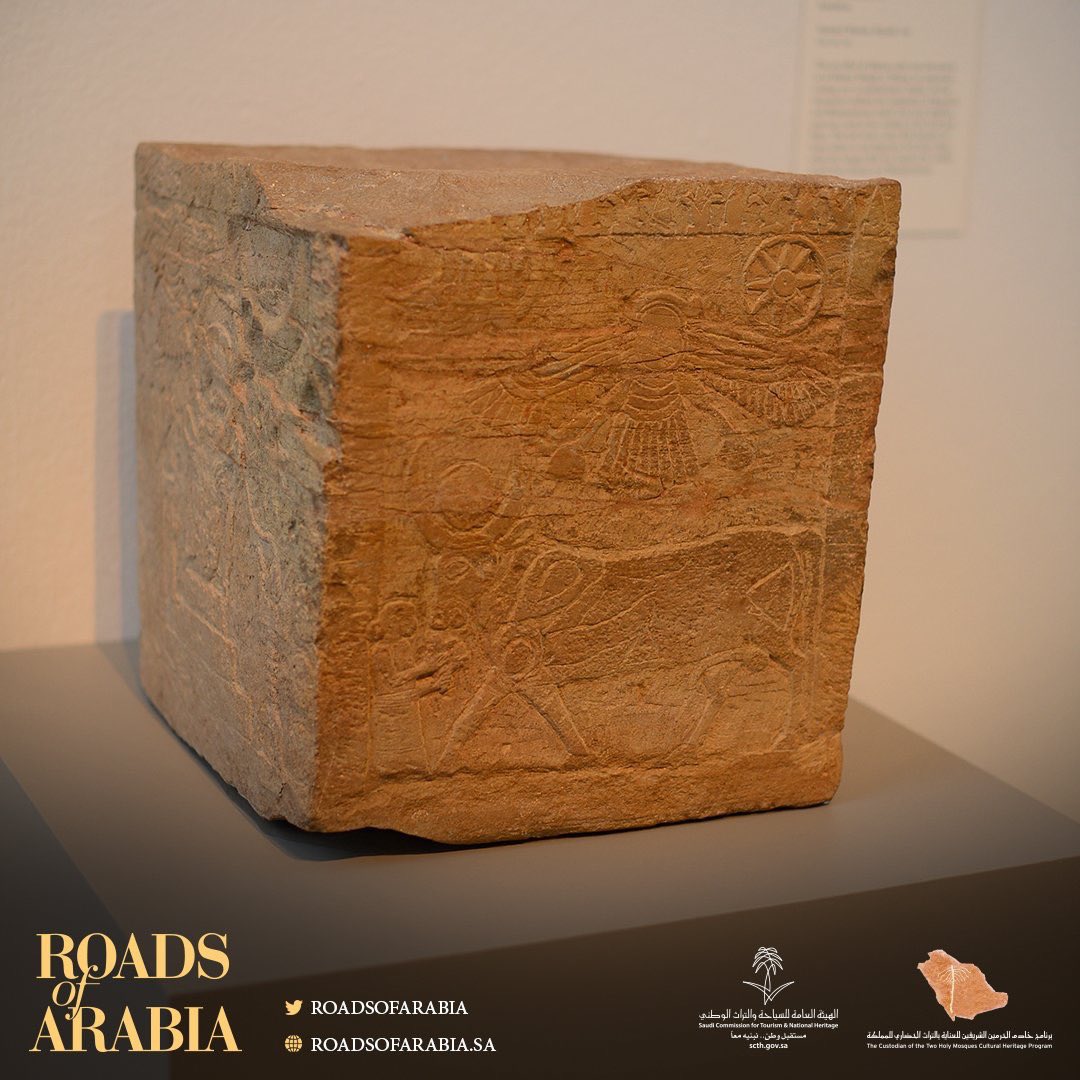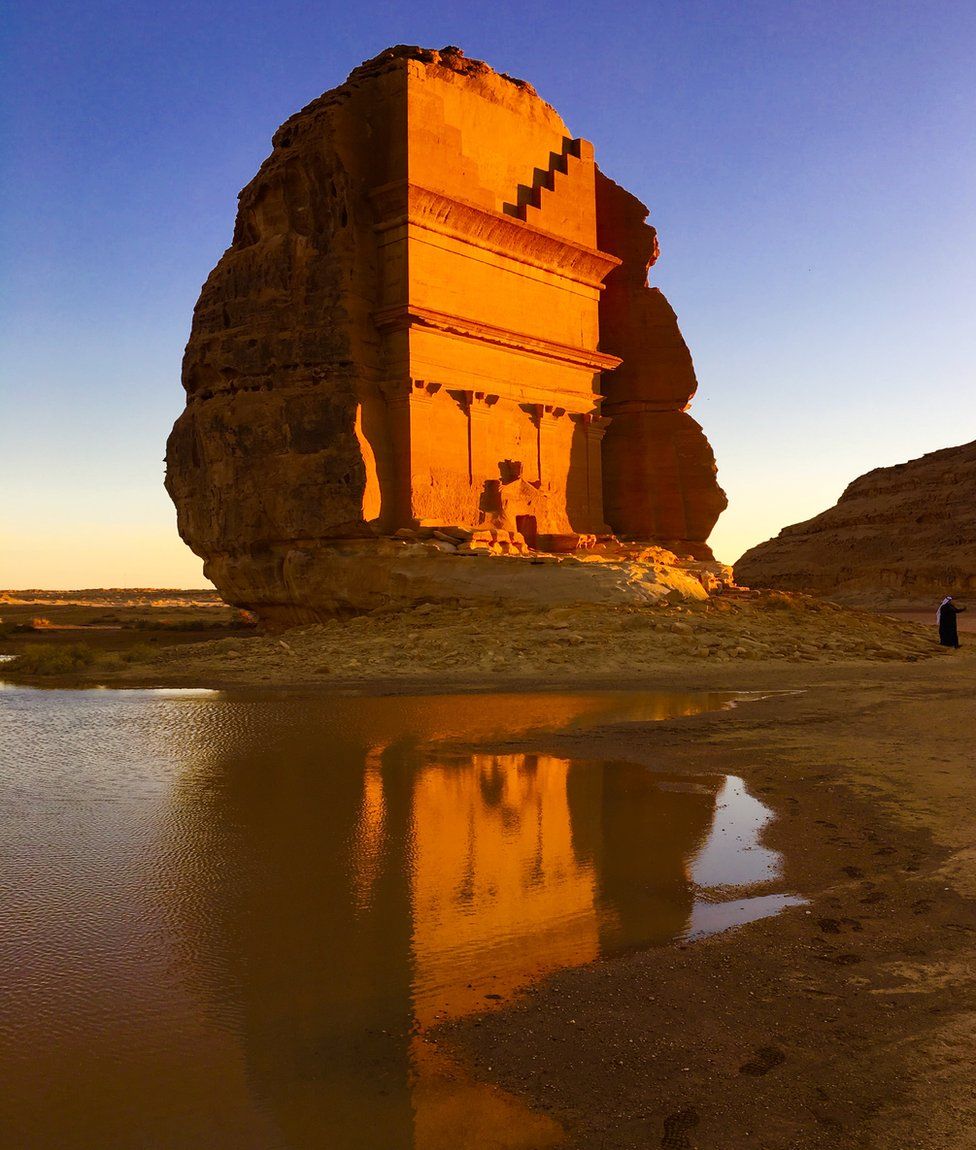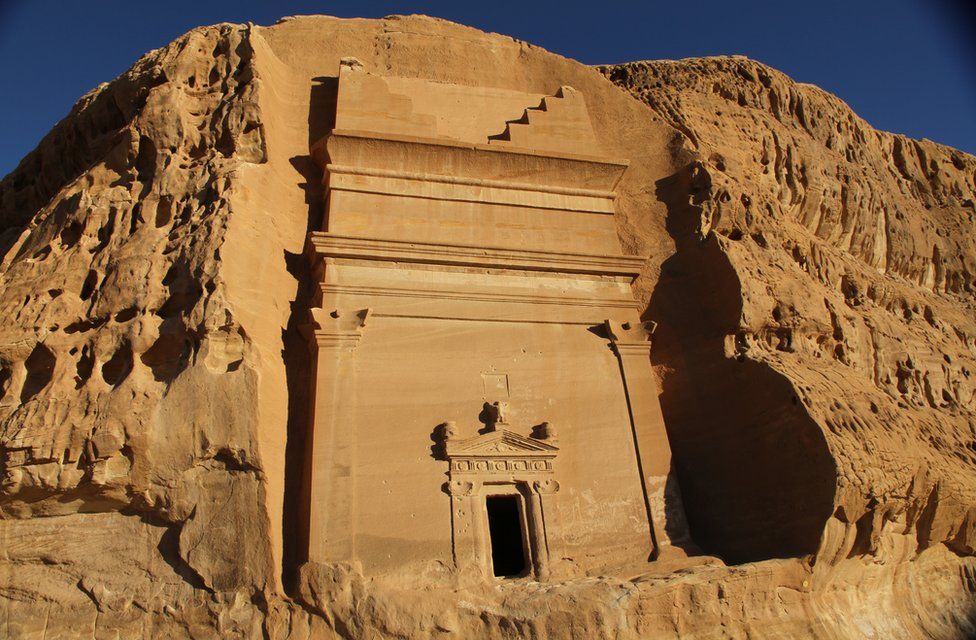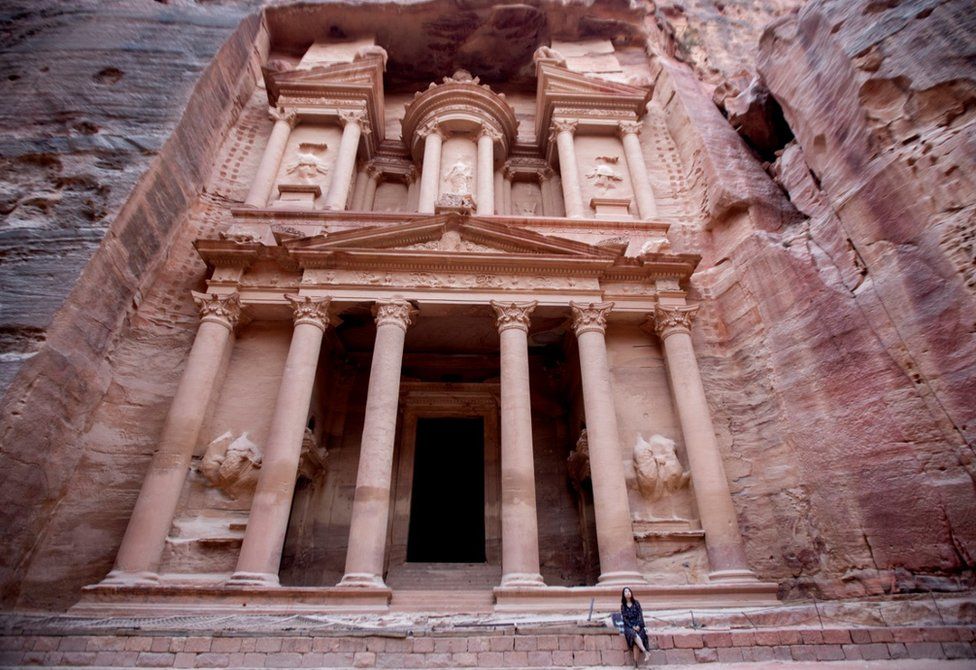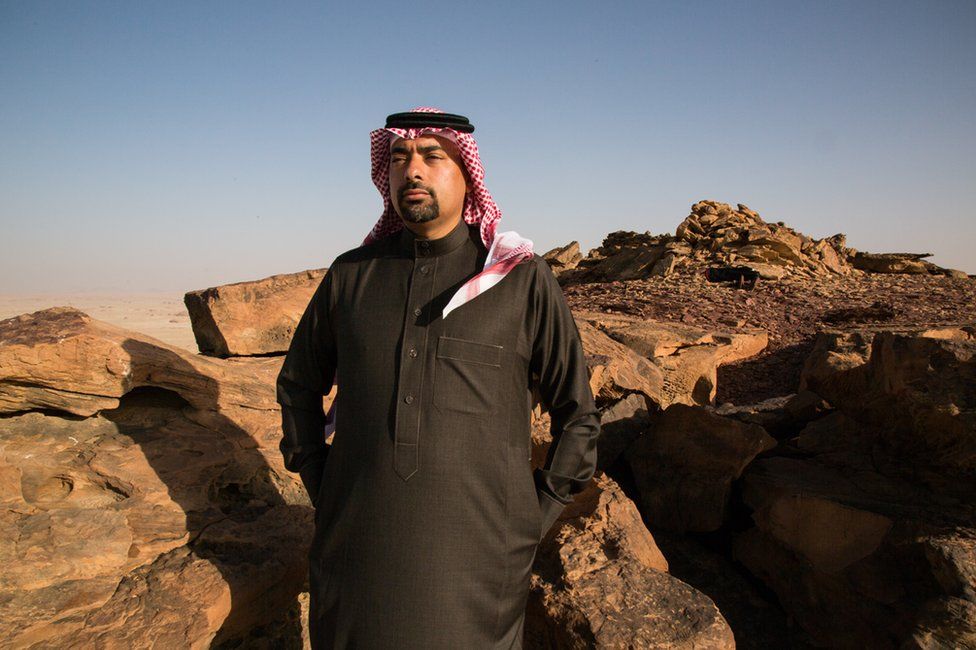ArabianEmpires&Caliphates
SENIOR MEMBER

- Joined
- Aug 2, 2016
- Messages
- 2,377
- Reaction score
- 4
- Country
- Location
100,000-year-old archeology site discovered in Riyadh
A joint Saudi-French mission has revealed sites dating back to the Paleolithic period in the mountains of Riyadh
Published: September 18, 2018 08:53Mariam M. Al Serkal, Senior Web Reporter

A joint Saudi-French mission discovered archeological sites back to 100,000 years in the hills surrounding the Al Kharj Mountains of Riyadh.Image Credit: Saudi Press Agency
Dubai: Archaeologists in Saudi Arabia have uncovered a 100,000-year-old site in the mountain range south of Riyadh dating back to the Paleolithic period.


The joint Saudi-French mission was carried out at archaeological sites under the supervision of the Saudi Commission for Tourism and National Heritage, which included field surveys at the hills surrounding the Al Kharj Mountains, part of the hills overlooking the Mawan valley, Ein Farzane and the hills overlooking the town of Al Shadidah.
This is the first time that sites from the Paleolithic period were discovered in Al Kharj as well as sites that originated from the Upper Paleolithic period, according to the Saudi Press Agency (SPA).
The Paleolithic period was also known as the Stone Age that ranged from 2 million to 10,000 years ago, while the Upper Paleolithic period began about 40,000 years ago.
The mission included 18 members of the Saudi and French scientists and specialists in the field of archaeological excavations.
The joint Saudi-French mission was carried out within the framework of an agreement signed between the two parties on September 21, 2011, to explore the archaeological sites at the Al Kharj governorate in Riyadh.
Prince Sultan Bin Salman, president of the tourism commission, appreciated the efforts of the mission and stressed the importance on preparing the site to receive visitors.
https://gulfnews.com/world/gulf/saudi/100000-year-old-archeology-site-discovered-in-riyadh-1.2279644
Saudi Arabia has world-class cultural heritage sites
February 26, 2019
560 views

Sigha Al-Shammari
Al-Jazirah
Our country has many ancient monuments and unique historical sites. This heritage is a tourism asset that has remained unused for many years. In the past, cultural and heritage tourism was limited as it was difficult to show others our monuments and historical sites. However, with the radical changes that Saudi Arabia is witnessing today on so many levels, the tourism sector has been reawakened and is opening its arms to everyone from all over the world.
The world will soon realize that we are a country with an extraordinarily rich material heritage. We have more than 6,300 cultural heritage locations, many of which are linked to Islamic history and cannot be found in any other part of the Islamic world.
There are hundreds of public and private museums spread around different regions of the Kingdom with great treasures that have not yet been promoted. All of this material inheritance will make Saudi Arabia an exceptional tourist destination. This will raise our economy to new levels while we expand the range of our source of income instead of relying only on oil.
It is up to researchers and scientists to study our ancient monuments and sites so that they can be reintroduced to the world and people can come to the Kingdom to learn about our culture and heritage.
We need professional historical research of an international standard. We need to look upon our material heritage with respect and appreciation, so that others will recognize its true value.
Twiitter @SighaAlshammri
Saudi Arabia rich with undiscovered archeological sites

NOOR NUGALI
“We discover new sites every day in Saudi,” he said, adding that there are over 100,000 sites of archaeological interest in the country. “Today we have more than 44 Saudi and international missions working in the Kingdom. Of those, 21 are from Germany, France, Italy, the US, the UK, Japan and China.”
It is a strange scenario, especially given that 10,000 of those sites have only been discovered in recent years. “The largest number of missions are from France,” Al-Zahrani added. “They are very interested in the history of the Arabian Peninsula.”
The Saudi-French archaeological mission in Jazan region, led by Dr. Soline Marion de Bros, an archaeologist from the French National Center for Scientific Research, is one of the most prominent – and successful – teams working in the Kingdom today. Working to uncover the past of the Arabian Peninsula, it has been carrying out archaeological excavations on Farasan Island since 2017.
So far, the team has revealed 30 sites dating back to pre-Islamic periods, including a number of settlements, animal remains including deer, cows, horses and turtles, and various finds including ancient Arabic inscriptions, and sites dating back to the Roman Empire.
“Our discoveries confirm that Farasan Island was inhabited by humans since prehistoric times,” said de Bros. “Since then, Farasan Island has been known for its cultural and commercial activities in the southern regions of the Red Sea, and in the northern part of the Great Farasan.”
The future of archaeology on Farasan Island is exciting. The next steps, according to de Bros, are to map the entirety of the island’s sites, creating a guide to its historical timeline and development. More local archaeologists, from academics to diggers, are also set for specialized training, to help uncover and preserve some of the Kingdom’s most precious new sites.
For Al-Zahrani, the progress is hardly surprising.
“Most of these missions have unanswered questions about our history and they know that the answers can be found here,” he said. “At the beginning of the 19th century, the Arabian Peninsula was a mystery to Orientalists, but they didn’t want to venture into the desert sands. However, in the late 19th century they came and got to know the lands and the people.
“Many sites were registered at that time, especially in the 1970’s, when a comprehensive archaeological survey was done. The results of that time provided a vast list of archeological sites,” he added.
http://www.arabnews.com/node/1441401/saudi-arabia
A joint Saudi-French mission has revealed sites dating back to the Paleolithic period in the mountains of Riyadh
Published: September 18, 2018 08:53Mariam M. Al Serkal, Senior Web Reporter

A joint Saudi-French mission discovered archeological sites back to 100,000 years in the hills surrounding the Al Kharj Mountains of Riyadh.Image Credit: Saudi Press Agency
Dubai: Archaeologists in Saudi Arabia have uncovered a 100,000-year-old site in the mountain range south of Riyadh dating back to the Paleolithic period.
The joint Saudi-French mission was carried out at archaeological sites under the supervision of the Saudi Commission for Tourism and National Heritage, which included field surveys at the hills surrounding the Al Kharj Mountains, part of the hills overlooking the Mawan valley, Ein Farzane and the hills overlooking the town of Al Shadidah.
This is the first time that sites from the Paleolithic period were discovered in Al Kharj as well as sites that originated from the Upper Paleolithic period, according to the Saudi Press Agency (SPA).
The Paleolithic period was also known as the Stone Age that ranged from 2 million to 10,000 years ago, while the Upper Paleolithic period began about 40,000 years ago.
The mission included 18 members of the Saudi and French scientists and specialists in the field of archaeological excavations.
The joint Saudi-French mission was carried out within the framework of an agreement signed between the two parties on September 21, 2011, to explore the archaeological sites at the Al Kharj governorate in Riyadh.
Prince Sultan Bin Salman, president of the tourism commission, appreciated the efforts of the mission and stressed the importance on preparing the site to receive visitors.
https://gulfnews.com/world/gulf/saudi/100000-year-old-archeology-site-discovered-in-riyadh-1.2279644
Saudi Arabia has world-class cultural heritage sites
February 26, 2019
560 views

Sigha Al-Shammari
Al-Jazirah
Our country has many ancient monuments and unique historical sites. This heritage is a tourism asset that has remained unused for many years. In the past, cultural and heritage tourism was limited as it was difficult to show others our monuments and historical sites. However, with the radical changes that Saudi Arabia is witnessing today on so many levels, the tourism sector has been reawakened and is opening its arms to everyone from all over the world.
The world will soon realize that we are a country with an extraordinarily rich material heritage. We have more than 6,300 cultural heritage locations, many of which are linked to Islamic history and cannot be found in any other part of the Islamic world.
There are hundreds of public and private museums spread around different regions of the Kingdom with great treasures that have not yet been promoted. All of this material inheritance will make Saudi Arabia an exceptional tourist destination. This will raise our economy to new levels while we expand the range of our source of income instead of relying only on oil.
It is up to researchers and scientists to study our ancient monuments and sites so that they can be reintroduced to the world and people can come to the Kingdom to learn about our culture and heritage.
We need professional historical research of an international standard. We need to look upon our material heritage with respect and appreciation, so that others will recognize its true value.
Twiitter @SighaAlshammri
Saudi Arabia rich with undiscovered archeological sites

NOOR NUGALI
- “Our discoveries confirm that Farasan Island was inhabited by humans since prehistoric times,” says archaeologist
- 10,000 sites have only been discovered in recent years
“We discover new sites every day in Saudi,” he said, adding that there are over 100,000 sites of archaeological interest in the country. “Today we have more than 44 Saudi and international missions working in the Kingdom. Of those, 21 are from Germany, France, Italy, the US, the UK, Japan and China.”
It is a strange scenario, especially given that 10,000 of those sites have only been discovered in recent years. “The largest number of missions are from France,” Al-Zahrani added. “They are very interested in the history of the Arabian Peninsula.”
The Saudi-French archaeological mission in Jazan region, led by Dr. Soline Marion de Bros, an archaeologist from the French National Center for Scientific Research, is one of the most prominent – and successful – teams working in the Kingdom today. Working to uncover the past of the Arabian Peninsula, it has been carrying out archaeological excavations on Farasan Island since 2017.
So far, the team has revealed 30 sites dating back to pre-Islamic periods, including a number of settlements, animal remains including deer, cows, horses and turtles, and various finds including ancient Arabic inscriptions, and sites dating back to the Roman Empire.
“Our discoveries confirm that Farasan Island was inhabited by humans since prehistoric times,” said de Bros. “Since then, Farasan Island has been known for its cultural and commercial activities in the southern regions of the Red Sea, and in the northern part of the Great Farasan.”
The future of archaeology on Farasan Island is exciting. The next steps, according to de Bros, are to map the entirety of the island’s sites, creating a guide to its historical timeline and development. More local archaeologists, from academics to diggers, are also set for specialized training, to help uncover and preserve some of the Kingdom’s most precious new sites.
For Al-Zahrani, the progress is hardly surprising.
“Most of these missions have unanswered questions about our history and they know that the answers can be found here,” he said. “At the beginning of the 19th century, the Arabian Peninsula was a mystery to Orientalists, but they didn’t want to venture into the desert sands. However, in the late 19th century they came and got to know the lands and the people.
“Many sites were registered at that time, especially in the 1970’s, when a comprehensive archaeological survey was done. The results of that time provided a vast list of archeological sites,” he added.
http://www.arabnews.com/node/1441401/saudi-arabia





